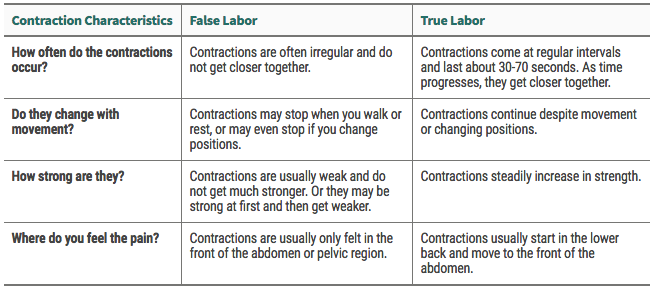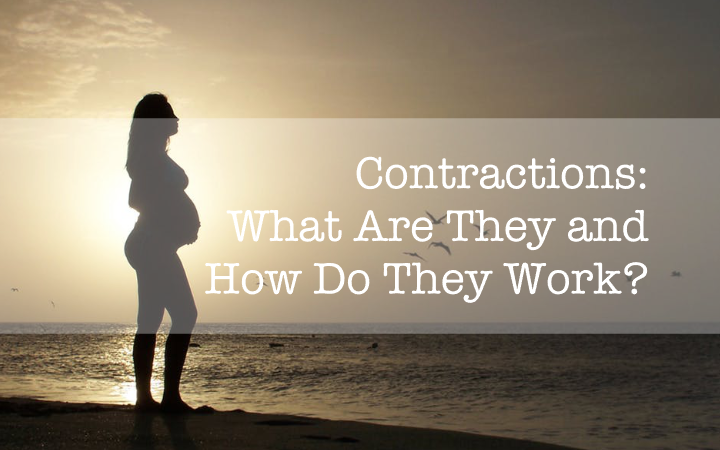There is a lot to labor and birth of a baby and many expectant mothers often fear contractions. Your body becomes a powerhouse the minute it begins forming your baby and it’s absolutely amazing to see how it works. Below is an excellent example of what happens during contractions. This video was going around on Facebook for a while but it is one of my favorite explanations so I wanted to share it with everyone!
All About Contractions
The good news is you don’t have to fear contractions! If you know what to expect and what is happening with your body, you are able to relieve tension and fear, which in turn will reduce the pain caused by tension and fear.
Yep, it’s true! It is scientifically proven that fear increases the amount of pain.
Here’s an article regarding fear and pain: Why Are Women Afraid of Labor Pain?
And another in reference to what causes pain and how to handle it: The Truth About Labor Pain
By definition, contractions are the rhythmic tightening of the uterus; when the vertical and horizontal muscle fibers work to squeeze the baby down and out while pulling the cervix back to open it.
Hormones Change During Pregnancy and Labor
There are 5 main hormones that change throughout pregnancy and again during labor, and they all build on each other through each step!
- Estrogen: increases the sensitivity of the uterus to oxytocin.
- Oxytocin: stimulates contractions in the uterus and triggers the production of prostaglandins.
- Prostaglandins: soften and ripen the cervix to allow it to stretch open during labor.
- Prolactin: stimulates lactation following birth, decreases stress and promotes a sense of calmness, and is responsible for instincts such as nesting, nurturing, and caring for an infant.
- Relaxin: likely plays a role in cervical ripening and relaxation of the pelvic girdle (the pubic symphysis, and the posterior and anterior sacroiliac joints).
Body Signals for Labor
Although contractions are the main indication of labor, there are others you should be aware of. These include:
- Heightened emotional sensitivity
- Feeling “crampy” or strong, pre-labor contractions.
- Increased vaginal discharge.
- Loss of the mucus plug or blood-tinged mucus (if in doubt about the quantity of blood, check with your care provider).
- A burst of nesting energy.
- Softer, more frequent bowel movements.
Contractions Cause Changes in the Cervix
The cervix often begins to change in late pregnancy and will continue to change as labor progresses. These changes can be felt during contractions known as Braxton Hicks, and with the “real” labor contractions.
- Effacement: thinning of the cervix; 0% (thick) to 100% (completely thinned out).
- You may hear your doctor say your cervix is 90% effaced. This means it is 90% thinned out.
- Dilation: opening of the cervix; 0cm (closed) to 10cm (completely dilated).
- Your doctor or nurse may state you are 2cm dilated. This means your cervix is beginning to open and it is approximately 2cm.
- Position of the cervix; moving from the posterior (back) towards the anterior (front) of the mother’s body.
Prelabor vs. Labor Contractions
It can be hard to tell if it’s “time,” especially for first-time mothers, or if it’s been a few years. To help determine between the two, below are some common differences between pre-labor and labor contractions. If you are concerned you may be having contractions, please contact your primary care provider!
- Prelabor Contractions
- May be regular or irregular, predictable or unpredictable, and vary in frequency or length
- Do not get closer, stronger, or longer
- Slow down or stop with a change in activity, such as resting, eating, or drinking
- Felt primarily in the front, or on just one part of the belly
- Labor Contractions
- Are usually regular and predictable
- Gets steadily closer, stronger, and longer
- Do not lessen with activity or eating/drinking but may increase in intensity by being active
- Are often felt in the front and back; if just front or just back, contractions are usually symmetric on both sides

Contractions During Labor
Towards the end of pregnancy, your body may begin to dilate without you realizing it. As your cervix dilates, the contractions may become a bit more intense. The contractions during labor tend to become closer together, increase with intensity, and last a few seconds longer. You will often hear the words “stronger, longer, and closer together” come from your support person, and although you may not want to hear that, it does bring good news with it! Your baby will soon be in your arms!
During early labor, your contractions might be 5 to 20 minutes apart. You may be able to continue chatting and carrying on with your daily routine. Typically, your cervix will go from 0cm to 4 or 5cm. When active labor begins, you may experience contractions every 2 to 3 minutes, lasting 60 to 90 seconds, and will cause you to be a little more focused during each contraction. These contractions often cause your cervix to dilate to 7 or 8cm. The next phase of contractions is brought on by transition. These are the last bit of contractions you will experience. During the transitional phase of labor, your contractions will allow your body to get to 10cm. These contractions are the toughest. Fortunately, this is the fastest stage of labor and your body typically will allow a break in between contractions, from 5 minutes to 10 minutes. Sometimes more, sometimes less.
Timing Contractions
If you begin experiencing contractions, the best thing to do is begin timing them by either writing them down or using an app on your phone or tablet. Start the timer as soon as the contraction begins and stop it once it ends. It is typically recommended that you monitor your contractions for an hour unless, of course, you feel uneasy about them. Always call your provider to let them know. They will ask how far apart each contraction is, how long they are lasting, and if you’ve been resting and drinking lots of fluids.
Early labor is best spent in the comfort of your own home. Try resting, distracting yourself with television, reading a book, relaxing in a bath or shower, and napping, if possible.
When To Call Your Doctor
If you are concerned, please do not hesitate to call your care provider at any time! Especially if:
- You think your water has broken.
- You are bleeding (more than spotting).
- The baby seems to be moving less than normal.
- When your contractions are very uncomfortable and have been coming every five minutes for an hour. (5-1-1 rule: contractions are 5 minutes apart, lasting 1 minute, for 1 hour)
For more information regarding the different stages of labor, view the Stages of Labor blog post.

